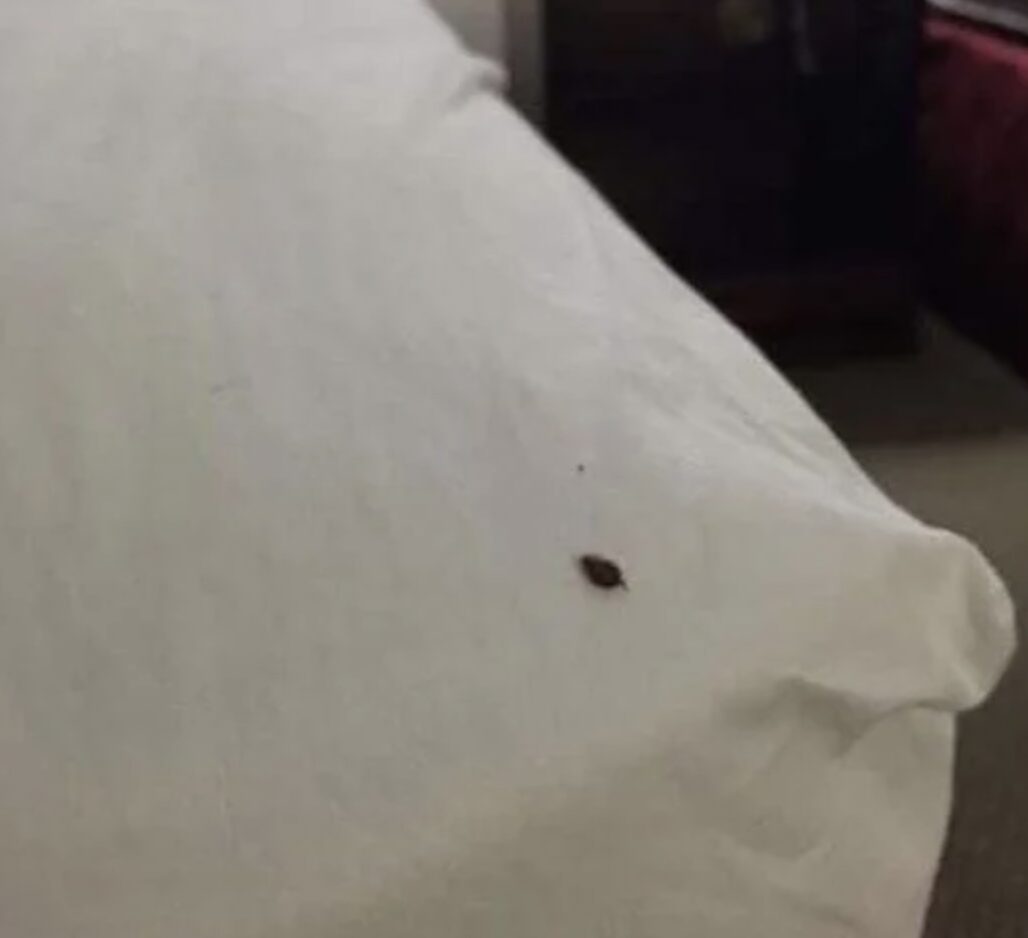Finding ticks inside your home can be unsettling, especially considering the potential health risks they pose. Ticks are not just a nuisance but can carry dangerous diseases like Lyme disease and Rocky Mountain spotted fever, which makes it essential to know how to properly handle a tick infestation. This article provides a step-by-step guide on what you should do if you find ticks inside your home, focusing on prevention, identification, and proper removal techniques.
What You Need to Know About Ticks
Ticks are small, blood-sucking parasites that can be found in wooded or grassy areas, but they can also make their way indoors. They typically latch onto pets or humans when they walk through tall grass or brush. Once inside your home, ticks can infest bedding, carpets, and furniture, making them a significant concern. Depending on your location, the risk of encountering ticks can vary, especially if you live in an area prone to tick populations.
 Tick. Credit / Shutterstock
Tick. Credit / Shutterstock
Risks Associated with Ticks
Ticks are known to transmit several diseases to humans and animals. Lyme disease, one of the most common tick-borne illnesses, can cause long-term health problems such as fatigue, joint pain, and neurological issues. Rocky Mountain spotted fever is another potentially fatal disease that can cause fever, rash, and muscle pain. These diseases are transmitted through the tick’s bite, so it’s important to remove ticks promptly and properly.
How to Identify and Isolate the Tick Problem
The first step in addressing a tick infestation is to identify the type of tick you’re dealing with. Common ticks found in homes include the black-legged tick, dog tick, and brown dog tick. Each type has its own characteristics, so being able to identify them can help you assess the situation better.
- Black-legged ticks are small and dark-colored, and they are commonly associated with Lyme disease.
- Dog ticks are larger and typically found on pets, although they can infest your home.
- Brown dog ticks are often found in homes, particularly where dogs are kept, and are known to transmit diseases like Ehrlichiosis.
Once you’ve identified the type of tick, it’s important to keep your children and pets away from the affected areas. This helps prevent further exposure while you work to eliminate the ticks.
 Credit / Wikimedia Commons
Credit / Wikimedia Commons
Protective Steps to Prevent Tick Bites
When handling ticks or cleaning an area where ticks have been found, always take protective measures. Wear gloves, long sleeves, and long pants to minimize your skin’s exposure. This is particularly important when removing ticks from pets or furniture. If you’re in an area with a known tick population, such as grassy or wooded environments, take precautions by wearing protective clothing and using tick repellents.
How to Clean Your Home After Finding Ticks
After you’ve identified the areas where ticks have been, it’s important to clean thoroughly. Wash any clothing, bedding, or fabric that may have come into contact with ticks in hot water. Using a high heat setting in the dryer will help ensure that ticks are killed. Vacuum the areas where ticks may be hiding, especially in crevices, corners, and around furniture. Make sure to dispose of the vacuum bag properly to avoid reintroducing ticks into your home.
Proper Tick Removal
If you find a tick on your body or your pet, removing it safely and promptly is crucial. To remove a tick:
- Use fine-tipped tweezers: Grasp the tick as close to the skin’s surface as possible. This will help you remove the tick without leaving parts of it embedded in the skin.
- Pull steadily upward: Avoid twisting or jerking the tick, as this can cause its mouthparts to break off and remain in the skin.
- Dispose of the tick properly: After removal, clean the bite area with alcohol or soapy water to disinfect it. You can place the tick in alcohol to kill it, or flush it down the toilet.
Monitor for Symptoms After a Tick Bite
Even after removing a tick, it’s important to monitor the bite area and keep an eye out for any signs of infection or illness. Symptoms such as fever, rash, or fatigue may indicate a tick-borne disease, in which case it’s crucial to seek medical attention. Early detection and treatment are key to preventing long-term health complications associated with tick-borne illnesses.
How to Prevent Future Tick Infestations
Prevention is always better than treatment. Here are some steps you can take to reduce the chances of ticks entering your home:
- Keep your yard well-maintained: Trim grass, remove leaf litter, and clear any brush where ticks may reside.
- Use tick repellents on pets: Regularly treat pets with tick prevention medications and inspect them for ticks after they’ve been outside.
- Seal cracks and gaps: Ensure that windows, doors, and vents are sealed properly to prevent ticks from entering your home.
- Regularly check for ticks: After spending time outside, check your body and clothing for ticks, especially in areas like your scalp, armpits, and groin.
Conclusion
Finding ticks inside your home can be distressing, but with the right knowledge and quick action, you can manage the situation safely. By identifying the tick, using protective measures, and removing them properly, you can reduce the risk of tick-borne diseases. Maintaining a clean environment and being vigilant in tick prevention will help keep your home safe for both your family and pets.
For more information on how to handle pests and other health-related topics, check out these articles:

